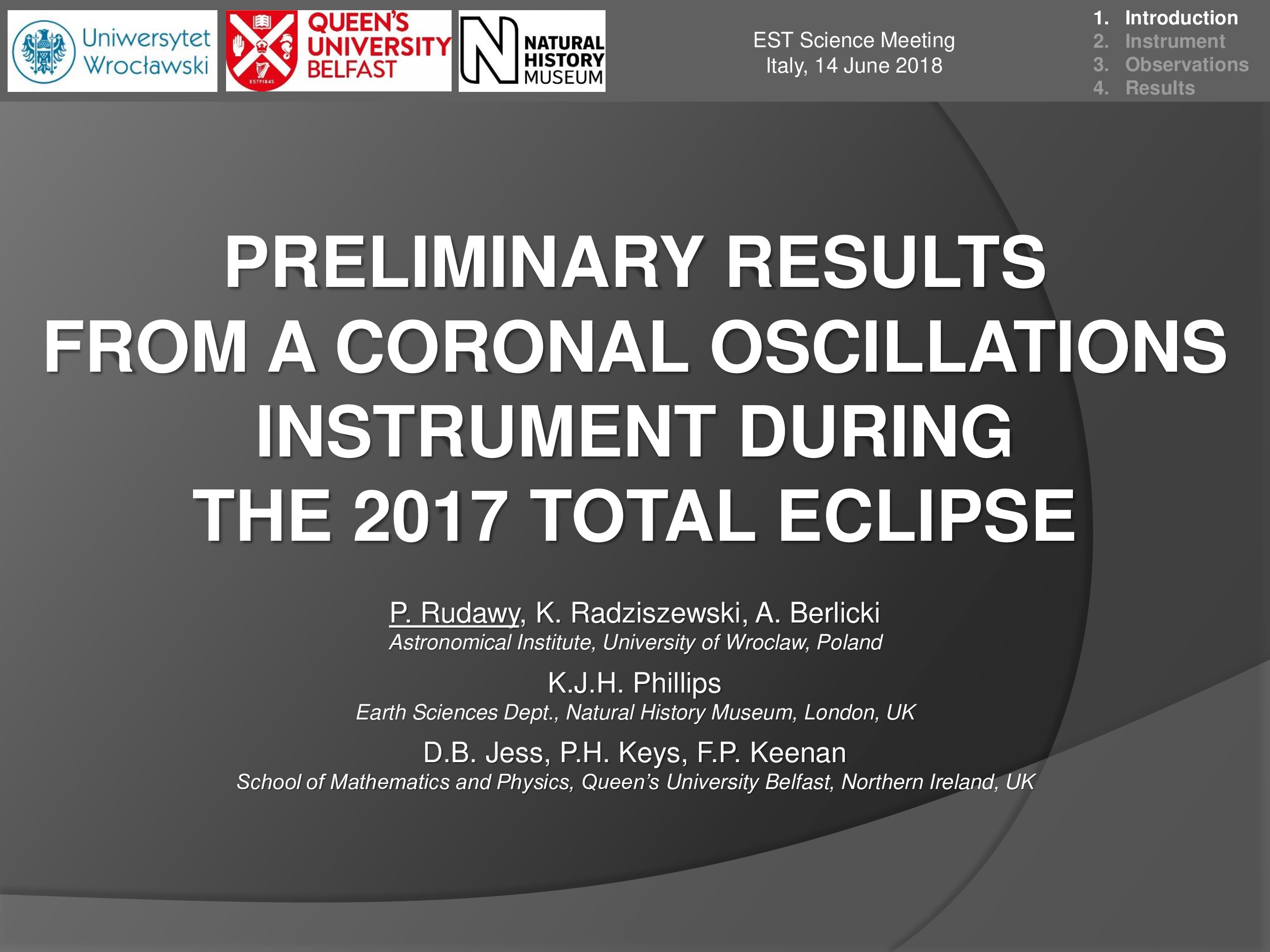Preliminary Results from a Coronal Oscillations Instrument during the 2017 Total Eclipse
Co-author
Rudawy, P., Radziszewski, K., Berlicki, A., Phillips, K.J.H., Jess, D.B., Keys, P.H., Keenan, F.P.
Affiliation
Astronomical Institute of the University of Wroclaw, Poland
Main category
Natural Sciences (Astrophysics and Astrononmy)
Abstract
An instrument using fast-frame cameras has been used during several recent total solar eclipses to search for oscillations in the green-line coronal emission. A much more sophisticated version of the instrument was prepared, tested, and successfully used during the August 21, 2017 total eclipse from a location in the Rocky Mountains, Idaho, USA. A pair of cameras, one observing the corona through a narrow-passband green line filter (wavelength 530.3 nm), and the other the white-light corona, was mounted on a 20 cm f/10 Celestron telescope on a Sky-Watcher EQ8 mounthead.
During the 122 s of totality, 428 images in a field-of-view that included approximately two-thirds of the corona were obtained in the 530.3 nm FeXIV line with an Andor iXon3 885 camera working at approximately 3.5 frames per second. The image format was 1004x1002, with a scale of 1.55 arcsec (1200 km) per pixel. The field-of-view included the loop system above the active region AR12672 which was near the Sun's east limb. Emission is recognizable out to a distance of 150,000 km, and the brightest structures in the active region loop have a strong signal (up to 3000 DN) that enables a search to be made for oscillations and other rapid fluctuations. This compares with a maximum signal of about 60 DN with a frame rate of 40 frames per second in a similar (negative) search by a previous version of this instrument during the 2001 total eclipse visible from central Africa. After dark-current subtraction and flat-fielding, a careful analysis of jitter and drifting motion of the images has enabled the solar coronal images to be placed on a frame that is stable to only 0.1 pixel, or 0.15 arcsec.
As a preliminary result, we did not detect any statistically significant evidence of local periodic variations of the coronal emission in FeXIV green line in any of the 480 000 investigated points . The result is in accordance with our previous findings based on observations collected during the 1999 and 2001 total solar eclipses and it confirms that the wave phenomena of Alfven-type, reported already by Tomczyk et al. (Nature 2007, ApJ 2009), even if common and always present in the solar corona, do not rise periodic fluctuations of the intensity of the coronal emission. An in-depth wavelet analysis of the collected data is under way.
Do you have problems viewing the pdf-file? Download poster
here
If the poster contains inappropriate content, please
report the poster. You will be redirected to the landing page.
